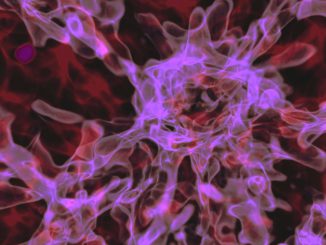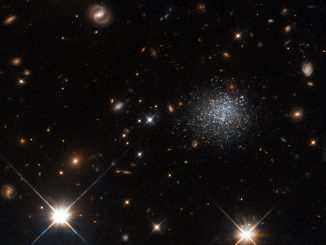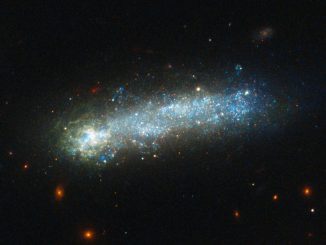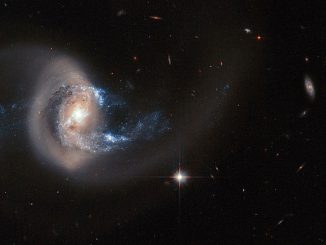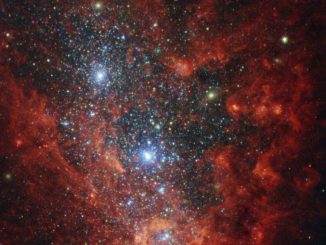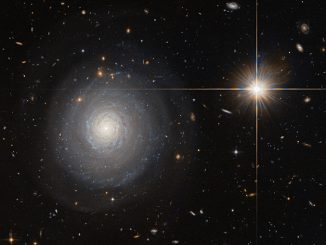
Hubble sees a lonely starburst galaxy
This NASA/ESA Hubble Space Telescope image shows an isolated starburst galaxy named MCG+07-33-027. The galaxy lies some 300 million light-years away from us, and is currently experiencing an extraordinarily high rate of star formation — a starburst. Normal galaxies produce only a couple of new stars per year, but starburst galaxies can produce a hundred times more than that!


